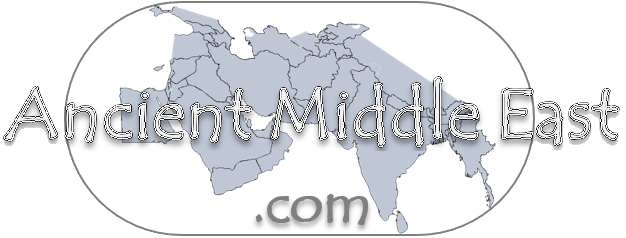To take a geographical snapshot of the entire Middle Eastern and Barbarian world in the first two centuries A.D.
That the Barrington Atlas' method, is woefully deficient in mapping the MiddleEast, and can be vastly improved, by prioritizing linguistic analysis of place names.
The lions' share job in making these maps involved simply flying low over the terrain of Google Earth, looking for modern locations which might be evolutionary offshoots of ancient place names, with the assistance of multiple overlaid editions of the
Ptolemaic (150 A.D.),
Peutinger (1st-5th century), and 19th-century
Rumsey Historical maps, as well as a
a Greek index, to attempt to avoid red-herring typos, and to get the best sense of the original phonemes which might've been distorted in translation.
I have scrupulously avoided checking the
Barrington Atlas, previously regarded as tops in this field, intending to get a compeltely new 'take' on the locations of these sites, so that future people may compare our claims as either cooroborating, or conflicting, without horizontal influence in either direction.
I think that I've generally done an imperfect, but pretty good job of overlapping repositories, as needed, e.g, pasting a city's Peutinger-pin's information into its Ptolemy-pin, and vice-versa. Thus if you find a city in any repository, you're probably going to get all or most of the relevant information from all repositories. The sole exception to this is the Holy Land repository by Bl. Anne Catherine Emmerich, which I made so early, that I don't typically included Peutinger or Ptolemaic information. Nevertheless if you want to be 100% sure to get all the information for a particular region, or city, then open simultaneously, in GoogleEarth, all repositories which overlap that region, for which of course the
Coverage Diagram is invaluable.
It has also become apparent to me throughout this work, that there are in fact multiple editors of Ptolemy, extending to who-knows-how-late after his lifetime. Thus many of the coordinates do not in fact work together, and it is often better to locate and identify a city, by its own contextual associations, in its own right, rather than upon relative coordinates to surrounding cities. Many of the cities along Northwest Africa, Western India, and Arabia could've probably been better located by me, if I'd've been more open-minded at that time, and less so rigidly tied to coordinates, as I was identifying them.
It seems that I did not disable my Dead Man's Switch.
That may mean that I am now dead.
Well, if I'm dead, then—in the immortal words of St. Thomas More—"I might as well discharge my mind" about whom I think is guilty of killing me, and why they wanted to.
Caveat:
Of course, all of this is only relevant if I was assassinated. If instead I died a natural death, then all of this written below is totally irrelevant, and nobody should be held responsible. But you should suspect that I was assassinated if I died in a bloody way; and you should ABSOLUTELY KNOW that I was assassinated, if officials claimed that I "committed suicide." As anyone who knows me knows; and as very, very many of my YouTube videos demonstrate; all throughout my life, I have lived rigorously Catholic, obviously believing it, producing fruits (theological ideas) far, far beyond what a person who is merely imitating it could possibly produce. So I'm certainly Catholic, and as a Catholic, I believe that if I ever committed suicide I would spend eternity in Hell, exactly as the Catholic Church teaches. So you KNOW and have the PROOF, that I would never commit suicide. Therefore, anyone who says that I committed suicide, is a liar, and probably even was a cooperative, colluding co-conspirator in my death. You should then publicize these my words as loudly and widely as possible, so that the country, and all people of good will, may (1) know the danger and perhaps even (2) remove them from power, lest they should do such things again, maybe even TO YOU.
Journal:
Here, for further consideration my thoughts, about who i think killed me:
Saturday, March 11, 2023 - Today is the first day that I thought that someone might actually kill me. All my life I've been aware that the Federal Government perpetrated 9/11, that is, they murdered 2000 U.S. Citizens, my countrymen, on the date of the battle of Lepanto (September eleventh), in order that they might have justification to go to war and kill 200,000 Muslims in the Middle East. The evidence for this is enormous:
- The building's owner, Larry Silverstein, said on national television, "The fire department commander called me . . . and they made the decision to pull it, — and he said pull it, — and we watched the building come down." The video is all over YouTube, and may you immediately take steps to make a copy of it, so that it is preserved for posterity.
- No airplane parts were seen in any footage at Shanksville, Pennsylvania.
- No airplane parts were seen at the Pentagon, but missile parts or something like that. Supposedly, to my vague memory, the Rolls-Royce CEO, seeing a picture of an engine-core lying on the Pentagon lawn, said "That's not a Rolls-Royce [airplane] engine."
- The group "Architects and Engineers for 9/11 Truth" says that no amount of plane material or burning furnishings could bring down a skyscraper like that, and besides, the airplane fuel would've burned off within the first 15 minutes, long before the buildings fell.
- Employees testified in the week before the incident that the building's security was powered down and workmen were seen with huge spools of wire entering the elevators.
- The connections to the Jewish Mossad were huge:
The building was owned by Larry Silverstein who has dual citizenship in both countries, and is obviously Jewish.
Probable Israeli Mossad agents were arrested and questioned the morning of 9/11, because their moving van, for their company, ironically called "Urban Moving," showed a picture on its side of a plane flying into 2 skyscrapers. They were then sent back to Israel where they bragged on Israeli television about their exploits.
The effect of the 9/11 attacks was to benefit Israel more than any other country on earth, as 2 of their enemies were wiped off the geopolitical map by Gulf War 2, and their biggest enemy (Iran) was thereby utterly surrounded by US bases.
As everyone knows, Jews run the Deep State, in Washington D.C.
NOTE: I myself am not, and have never been, in any way anti-Semitic or anti-Jewish, as I deeply love the Holyland and God's chosen people who then unfortunately killed him, choosing Caesar for their King, rather than Jesus Christ and His eternal Holy Spirit. Just because I am against Jews being able to control US geopolitics does not make me anti-Jewish, but anti-corruption and anti-war, as the Jewish people are very peaceful people, but their leaders are the most notorious schemers in history, from Thomas Cromwell, to the Rothschilds, to the U.S. Bureaucracy. Scripture says that this will happen (Rev. 13:11-14), probably more and more until the end of the world, but at least to the degree that the Spirit of Antichrist is not restrained.
2 days ago my mom got a phone call from someone claiming to be from Publishers Clearing House's prize patrol. This is obviously a scam, as the prize patrol says they will never call a person, in advance. The caller was obviously looking at the front of our house in Google's Streetview and proposed to come visit us and come up our driveway with our prize. They said that their Prize Patrol would first gather at Red Front (the supermarket down the street) to pick up drinks, but apparently they weren't aware that Red Front closed 3 years ago, so they were obviously from out of town.
1 days ago I got a Facebook Friend request from a "Martha Jones" who supposedly lives in Pierre, South Dakota. She too proposed to come to our house, right away, in this case because she was pretending that she wanted to marry me, but the important thing was that she get a husband AS FAST AS POSSIBLE, and was even willing to cross the country to see me. I did 3 people searches, and no such "Martha Jones" lives there, and furthermore the pictures she displays depict an obviously Italian woman, who obviously lives in Rome, Italy.
2 attempts to visit me in 2 days is very suspicious. Why might they have done this? Because a few days ago we had footage come out, displayed on Tucker Carlson, which proved that the January 6 Insurrection was actually, to some degree, to probably a BIG degree, a false flag attack INSTIGATED by Federal agents. We saw footage of the Q-anon Shaman being guided around locked doors and past crowds of policeman, into the Senate chamber. The claim that the policeman were intimidated, by fear of other people outside, just DOES NOT make sense. Then something even more spectacular happened: Every major news network, and a few so-called Fact-Check organizations (e.g, Politifact) immediately demonized Tucker Carlson as a "liar." Not one of them even so much as responded to the footage, to explain it, nor to question it, nor to say something like "the police officer should be charged for negligence and even for aiding and abetting the enemy of the United States," as so the shaman must be, if this is in fact an "insurrection," as they so frequently say. As a result of this new footage, and of the ABSOLUTELY INTOLERABLE non-response to it by the media, I spoke my mind, again, expressing dismay that the Federal Government, is clearly doing False Flag attacks, again, just like they did with 9/11, but in this case, trying to demonize—not Middle Eastern terrorists, but—my favorite political faction, the Trumpers. We suffer incessant Demonization, merely because we want to "drain the swamp [the Washington bureaucracy]." Our civil servants should not be doing this. Our news media should not be doing this. This truly is a "Threat to Our Democracy," if anything ever was. I think that my speaking out, publicly, on Facebook, especially on NPR's Facebook page, is why I am suddenly getting all these proposed visits, and I wonder if the intent is to assassinate me.


